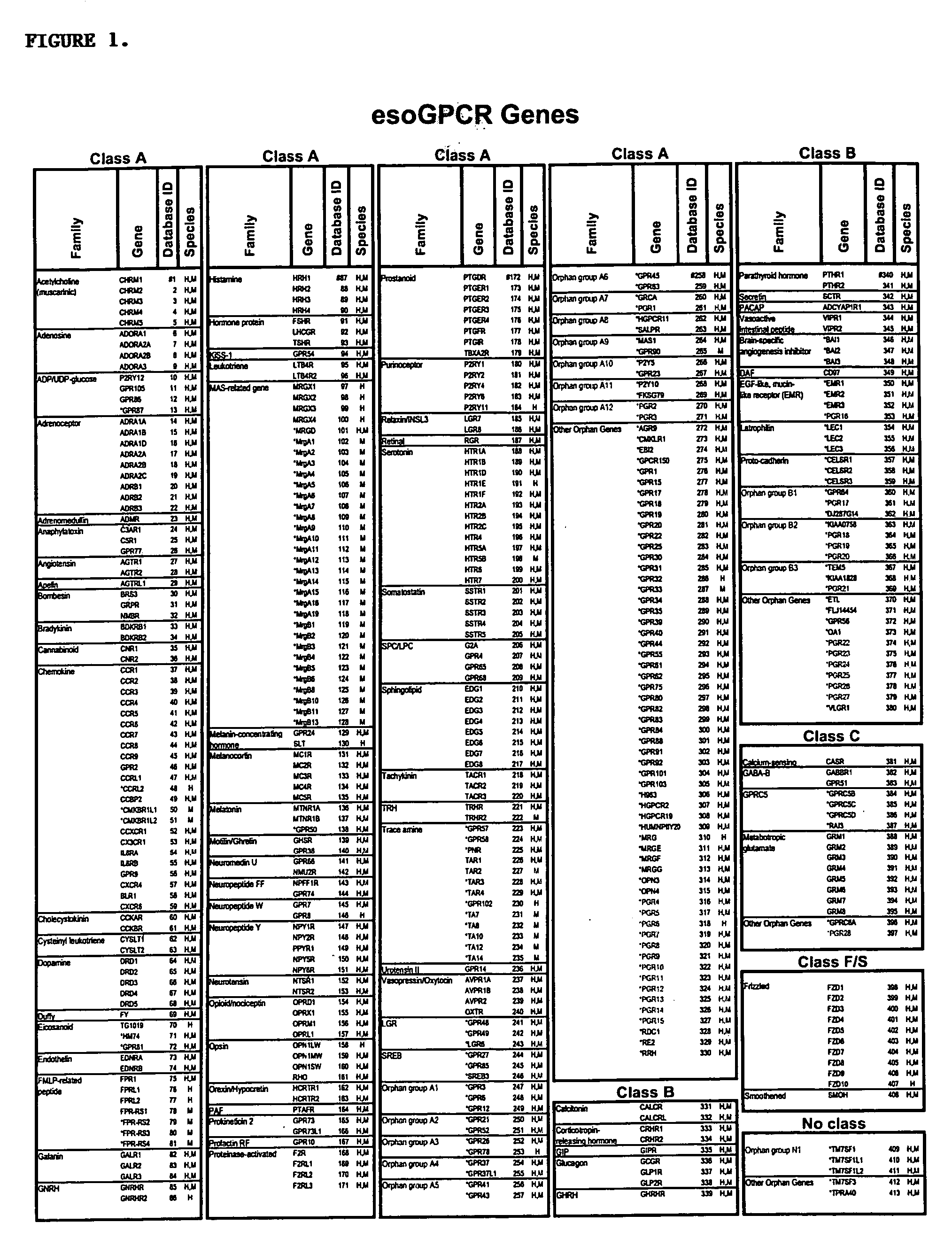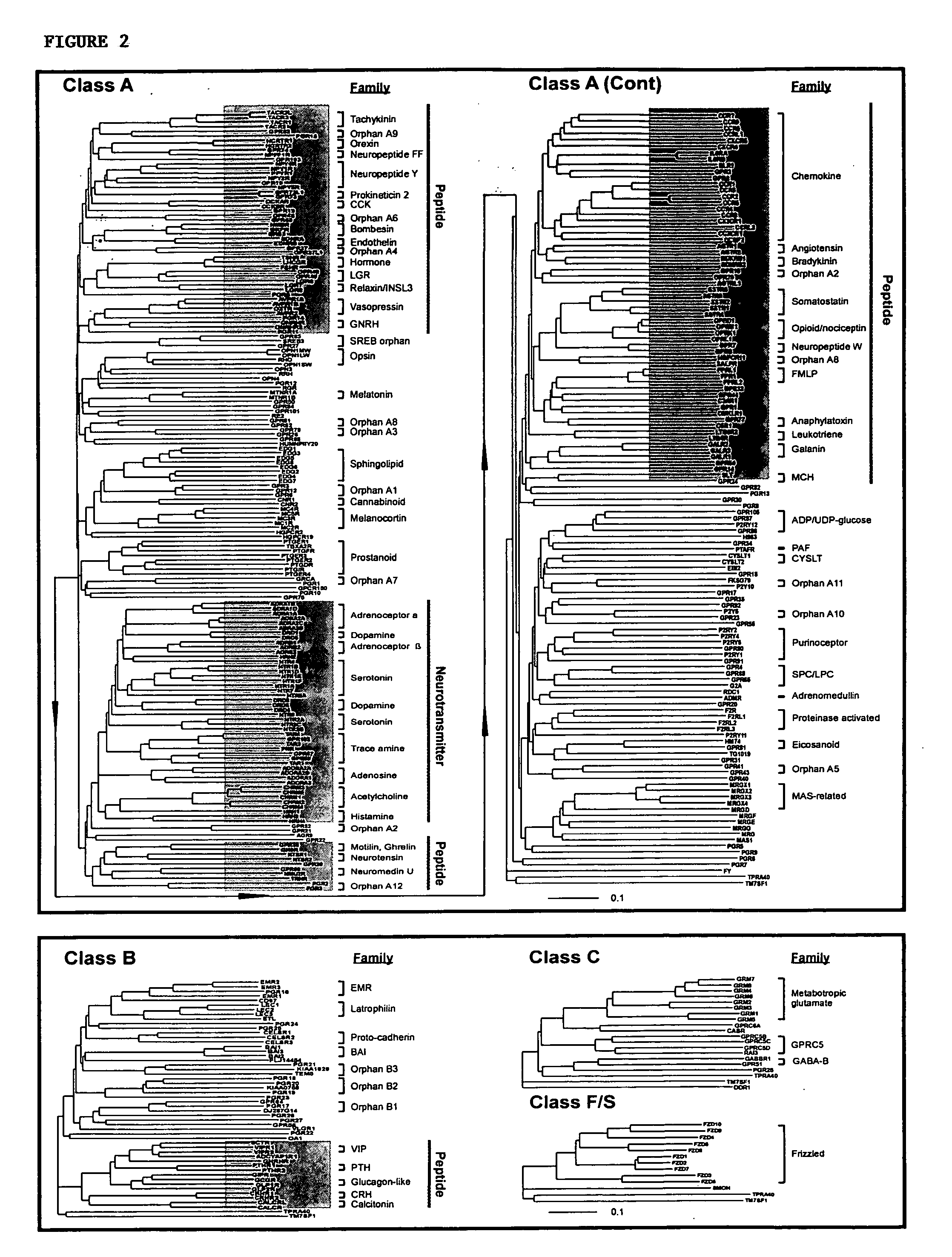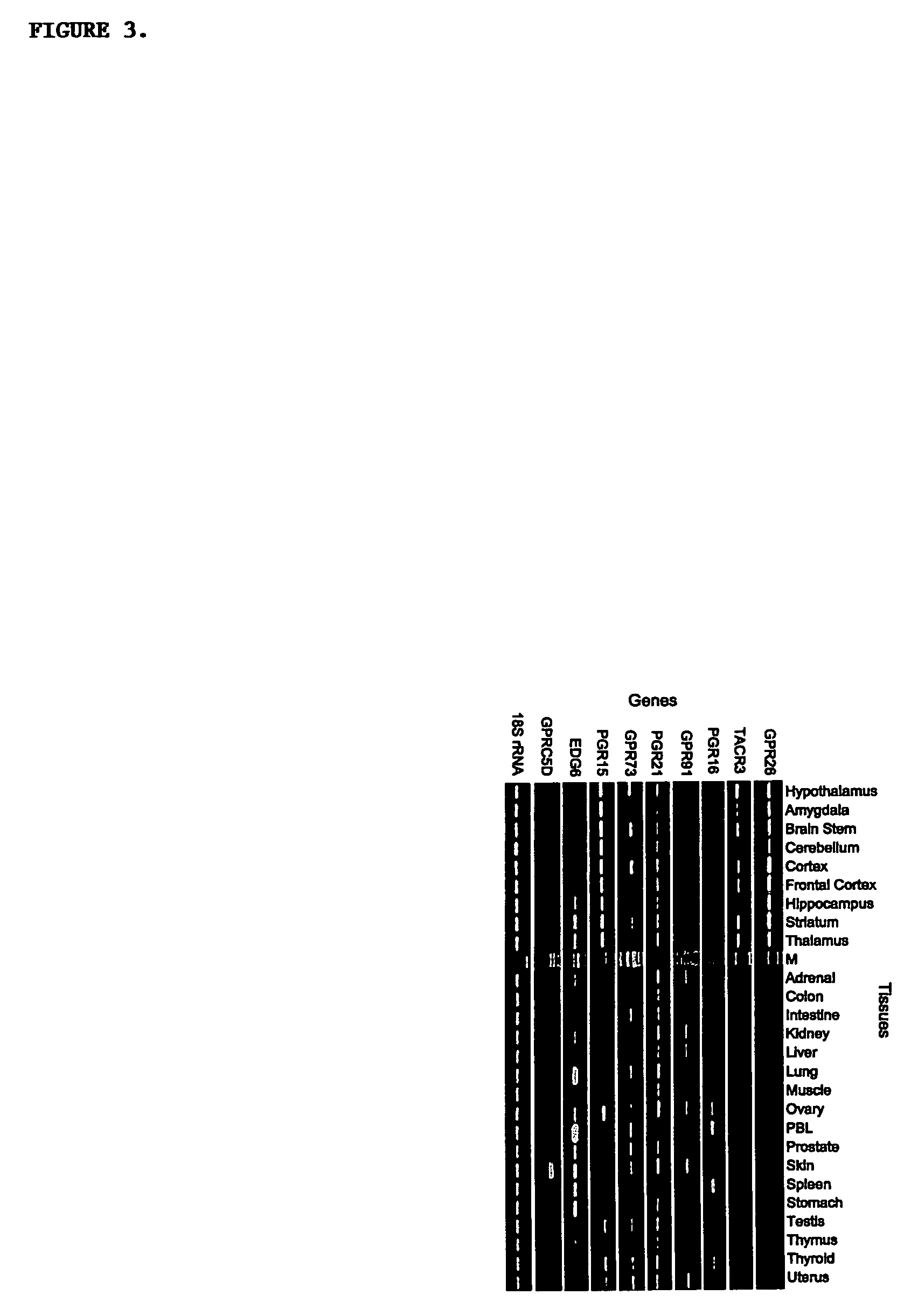G protein coupled receptors and uses thereof
a technology of g protein coupled receptors and receptors, which is applied in the field of medicine and drug discovery, can solve the problems of incomplete or unknown expression patterns of most gpcrs, and the size of the gpcr superfamily is still uncertain
- Summary
- Abstract
- Description
- Claims
- Application Information
AI Technical Summary
Benefits of technology
Problems solved by technology
Method used
Image
Examples
Embodiment Construction
[0475] G protein coupled receptors (GPCRs) include receptors for neurotransmitters, light, odors, hormones, and molecules used for communication in the immune system. GPCRs are by far the largest family of receptors known. It is believed that there are as many as 1,000 different GPCRs for odor recognition alone.
Identification of GPCR Polypeptides and Polynucleotides
[0476] To identify the full complement of GPCRs in human and mouse, we embarked on a multi-step process; the first step was to identify previously known GPCR genes and then the subsequent identification of novel genes. To identify known genes we searched the public literature and sequence databases of the National Center for Biotechnolgy Information for human and mouse GPCRs and then performed sequence comparisons. This procedure defined a unique gene set of GPCRs for both human and mouse and identified the human and mouse orthologs. In total, 340 GPCRs were identified in human and 304 in mouse. Sequence alignments ind...
PUM
| Property | Measurement | Unit |
|---|---|---|
| Fraction | aaaaa | aaaaa |
| Fraction | aaaaa | aaaaa |
| Fraction | aaaaa | aaaaa |
Abstract
Description
Claims
Application Information
 Login to View More
Login to View More - R&D
- Intellectual Property
- Life Sciences
- Materials
- Tech Scout
- Unparalleled Data Quality
- Higher Quality Content
- 60% Fewer Hallucinations
Browse by: Latest US Patents, China's latest patents, Technical Efficacy Thesaurus, Application Domain, Technology Topic, Popular Technical Reports.
© 2025 PatSnap. All rights reserved.Legal|Privacy policy|Modern Slavery Act Transparency Statement|Sitemap|About US| Contact US: help@patsnap.com



